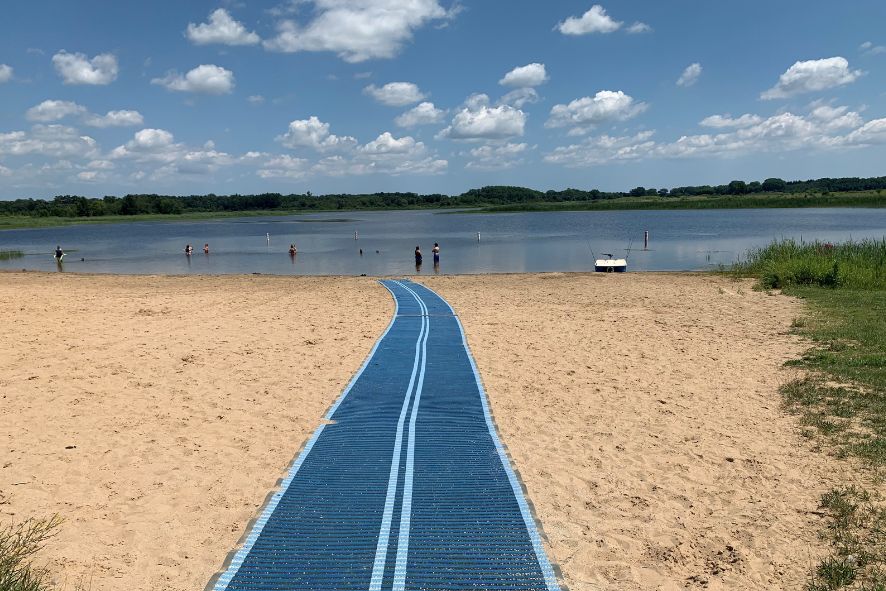
A beach mat stretching across the sand provides access to the water’s edge at Bong State Recreation Area. Photo courtesy of WIDNR
Accessibility, all year round
July is Disability Pride Month, but throughout the whole year we at NRF look for ways to help a wider variety of people enjoy our state’s natural wonders. Often, we do this by funding accessibility improvements whenever possible through our grant programs.
This month, we’re highlighting some adaptive equipment options you might not be aware of at Wisconsin’s state park properties. The Wisconsin Department of Natural Resources or individual state parks’ “friends groups” manage most of these equipment rental opportunities.
Are you, a friend, or a family member interested in trying one of them? To learn more about these resources, we spoke to Nick Zouski, the DNR’s Accessibility Coordinator. Read on to learn more about all the options available.
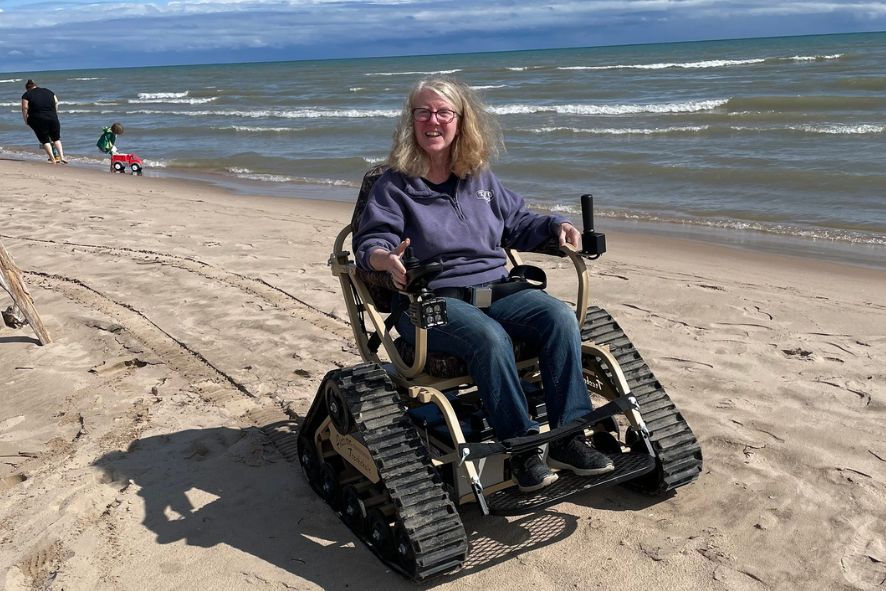
The new action track chair at Point Beach State Forest, purchased in part by grant funds from NRF. Photo courtesy of John Wyrostek
Outdoor Wheelchairs
You may have noticed that standard wheelchairs will work on trails at many state parks, forests, and recreation areas. But, what about more rugged trails? Enter: the all-terrain wheelchair!
One of the DNR’s newer accessibility options, these wheelchairs can go places where standard ones can’t. Their tank-like tracks make them perfect for “off-roading.”
Peninsula State Park in Door County was the first to host an all-terrain wheelchair, followed by Point Beach State Park and Buckhorn State Park. Another chair at Newport Beach State Park is coming soon.
Interested in exploring a different site? Access Ability Wisconsin also provides outdoor wheelchairs and trailers to help individuals explore nature and create their own outdoor adventures.
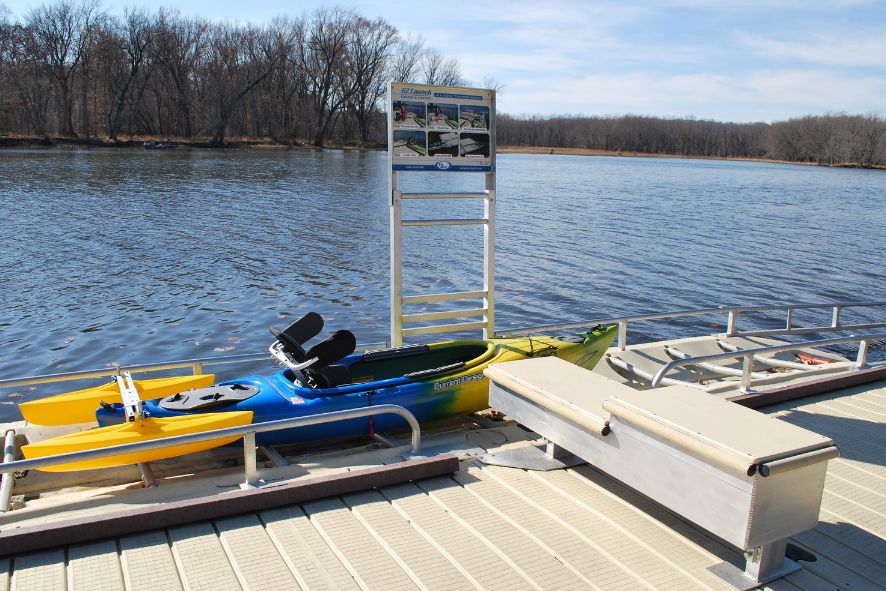
The new adaptive kayak and launch at Merrick State Park can be used by people with a wider variety of physical abilities than standard kayaks. Photo courtesy of WIDNR
Accessible kayaks, launches, and beaches
What’s the newest adaptive recreation feature at Wisconsin’s state park system? Adaptive kayaks and launches. Merrick State Park was the first to have an adaptive launch installed. Additionally, several places rent out adaptive kayaks, which feature enhanced stability, supports, and bracing.
Wondering what the difference is between “universal” and “accessible”? They’re similar, but the word “accessible” sometimes implies that only people with severe disabilities would use it. “Universal” refers to resources that anyone could use, including folks with typical physical abilities. Much of the adaptive equipment is more “universal.”
When considering universal vs. accessible, Zouski says, “Think of door-opening buttons – they were originally designed for people using wheelchairs… but how many people carrying lots of stuff or pushing strollers use those buttons?”
“You don’t have to show up in a wheelchair or have a handicap parking sticker to use this stuff,” Zouski pointed out. “I think the general public had kind of a misconception that you had to be severely disabled to use the adaptive equipment. And we’re trying to promote that really, anyone can. Someone who’s older and has balance issues, for example – go ahead and rent an adaptive kayak just like you would any other kayak.”
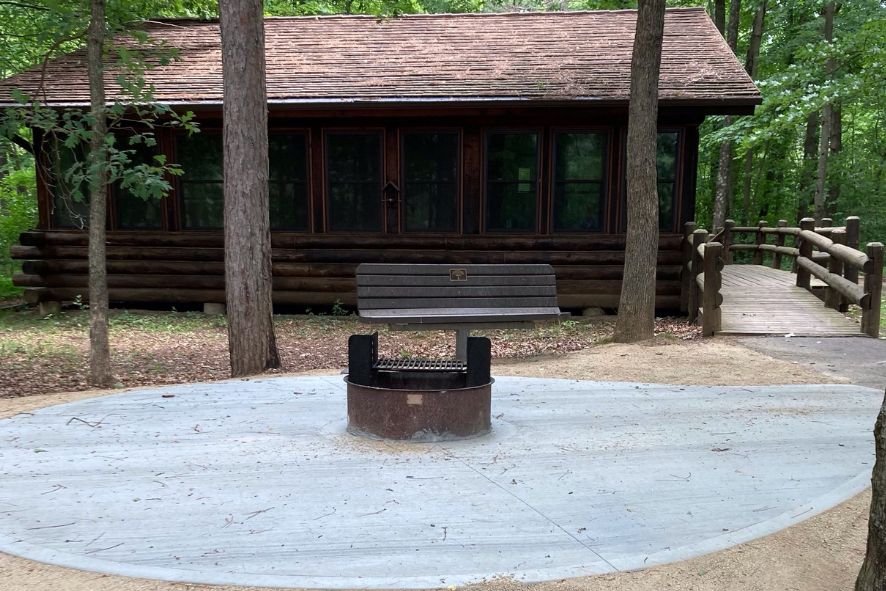
A paved area surrounding a campfire pit (funded by NRF) outside an accessible cabin at Mirror Lake State Park. This surface makes smore-making easier for people with mobility challenges. Photo by Kara McCarty
Universal trails
When determining whether a trail is accessible to all people, what should you consider or look for? Unfortunately, there’s no ADA guidance for trails. Accessible trails do not need to be “paved.” And, paved trails aren’t always accessible, for example if there’s a step in the middle of a trail. Plus, people with mobility challenges are all different.
Generally, trails that have a firm or stable surface with no obvious obstacles can be used by nearly everyone. Paved trails, crushed granite or limestone trails, and boardwalks are usually considered universally accessible.
The DNR’s Find a Park interactive map shows all 59 universal trails within Wisconsin’s state parks, forests, and trails.
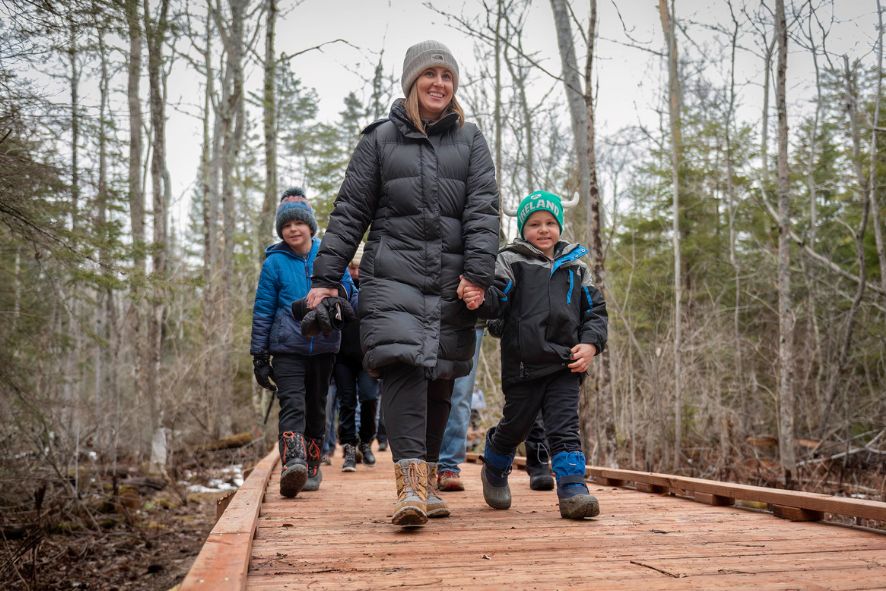
Newport State Park’s old “on the ground” Fern Trail that was often flooded was replaced with this accessible boardwalk, thanks in part to a 2023 NRF grant. Photo by Mark Glasser
Other universally-useful resources
The DNR has lots more accessibility options in the works. Accessible cabins are extremely popular, and usually booked. This implies that more folks would use these cabins if more of them were available. The DNR is hoping for more of them in the future to accommodate the demand.
Gradually, state parks properties are also replacing their picnic tables. Universal picnic tables have clearance on both sides, so everyone can use them. Zouski said, “Whenever we replace old tables, we’re ordering universal ones.”
Another improvement is that every fishing pier built by the DNR going forward is accessible to people with disabilities, following ADA guidelines.
Even in winter, universal access opportunities are available. This includes cross-country sit skis, plowed trails in winter, and boat launches cleared of snow to provide access for ice fishing.
The DNR has a lot of adaptive recreation resources available on their website.
Zouski reiterated how much he wants folks to know these resources exist. And, to take advantage of them as they plan their outdoor adventures. “We want folks with varying abilities to be able to get out there and enjoy what everyone else does.”
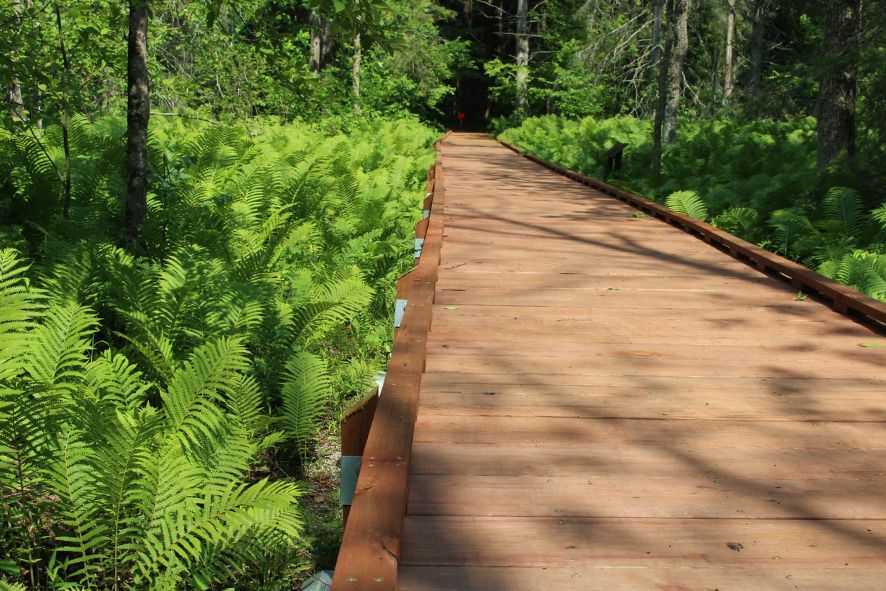
Fern Trail’s new boardwalk is universally accessible. Photo by Caitlin Williamson
Accessibility on NRF Field Trips
Wondering which NRF Field Trips are the best match for your abilities? Trip titles in the Field Trip Guidebook are color coded with a physical demand rating to help you decide whether the activity level is right for you. 30 of the trips in 2024 are accessible to users of standard wheelchairs. Five trips have free all-terrain outdoor wheelchairs available for rent on-site. And – new in 2024 – trail descriptions have been added so attendees have more detailed information about the terrain.
More about Field Trips accessibility:
- Field Trips accessibility page
- 1-minute Field Trip video about the accessibility and geology of Peninsula State Park
More Access to Outdoor Adventures Statewide
The Natural Resources Foundation is proud to support efforts to make our state’s outdoor wonders more accessible to all. A recent NRF grant supported improvements to the accessible cabin and a new accessible fishing pier at Copper Falls State Park. Also, NRF recently funded new accessible viewing platforms at Navarino Nature Center, and a new trail and boardwalk/deck to improve access to the Nemahbin Spring feature at Lapham Peak.
Thank you to NRF’s members for supporting these and many other efforts!
Written by Shelly Torkelson, Communications Director